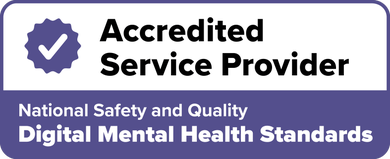Bipolar Disorder: Symptoms, Risk Factors, and Treatment
Bipolar disorder, formerly known as manic depression, is a chronic lifelong mental health condition with extreme mood swings. It is primarily inherited, but various stressors such as pregnancy or losing a loved one can trigger bipolarism symptoms. However, with proper treatment, individuals can function well in their jobs, relationships, and society.
Symptoms of Bipolarism
Compared to the average person with typical ups and downs, an individual with bipolarism has two extreme states that alter from a severe depressive episode (downs) to an intense manic episode (high). Others may experience a mix of both episodes simultaneously. However, it is less common. Fortunately, there are symptom-free periods in between.
Take our depression test if you wish to explore more.
Bipolarism symptoms of both depressive and manic episodes:
Depressive Episodes
During the depressive state of bipolarism, considered a major depressive disorder (MDD), individuals struggle with feelings of hopelessness, helplessness, worthlessness, and guilt. They experience persistent sadness and crying, no longer enjoy pleasurable activities, and isolate themselves from the world.
Due to the depleting energy of bipolarism symptoms, everyday tasks, such as washing dishes, making the bed, or showering, become too challenging. They often can't get out of bed for days, weeks, or more. Their sleep is disturbed by insomnia, sleeping longer, or both.
Most concerning is that individuals with bipolarism are at a greater risk of suicidal attempts or death by suicide. Please contact Lifeline Australia immediately if you are having these thoughts.
Manic Episodes
During the manic states, individuals exhibit impulsivity, such as chronic spending, sometimes to an extreme of financial ruin. They become more risky and reckless through sexual encounters, excessively driving too fast, or drinking and driving. Their speech is rapid or pressured, and they go from excessive happiness to euphoria.
Bipolarsim distorts one's thought patterns from grandiosity, where they think they can conquer the world, to a flight of ideas that changes from one minute to the next. Their sleep patterns also switch to a decreased need for sleep, often staying up for days.
If severe enough, individuals may experience paranoid delusions and hallucinations, possibly requiring hospitalization. Therefore, manic episodes can be just as dangerous as depressive episodes due to the extreme nature of these bipolarism cycles.
Different Types of Bipolarism
For many years, bipolarism fell under the same umbrella. However, behavioural studies have finally recognized that various individuals present with different onsets, duration, or severity levels. Since that discovery, they have now characterized three types of bipolarism. These include:
Bipolar I Disorder:
To be diagnosed with bipolar disorder I, the individual must have at least one manic episode that lasts one week or requires hospitalization. In contrast, the depressive episode must last at least two weeks or more. They may simultaneously experience depressive and manic episodes (mixed episodes). However, this is less common.
Bipolar II Disorder:
Individuals with bipolar II have never had a full-blown manic episode, but at least one hypomanic and one depressive episode must occur with this diagnosis.
Cyclothymic Disorder:
A diagnosis of cyclothymic entails at least two years of depressive and manic symptoms, and their mood swings are never symptom-free for more than two months. These symptoms are also not severe enough for either major depressive disorder or full-blown mania.
Not Otherwise Specified, Other Specified Disorder, Or Unspecified Disorder
Suppose bipolarism symptoms do not fit the three conditions above, but an individual presents with similar characteristics. In that case, individuals may be diagnosed with not otherwise specified, other specified disorder, or unspecified disorder. However, treatment methods are essentially the same as the others.
Risk Factors of Bipolarism
Everyone requires some form of routine and balance to maintain wellness and stability. Still, individuals with bipolarism are more at risk if they don't care for their health, physically and mentally. So, here are some of the risk factors that can trigger a depressive or manic episode. Examples include:
Inconsistent sleep regimen
Lack of exercise
Poor eating habits
Alcohol or substance use
Not seeking treatment or support
Treatment for Bipolarism
The first and most crucial step to maintaining wellness with bipolarism is seeking treatment. Learn more about treatment options here.
Psychotherapy or Counselling is a talk therapy that benefits individuals living with bipolarism. A therapist or psychologist can help you work on unhealthy behaviours and replace them with healthy ones, and they can also shift negative beliefs or thought patterns to positive ones. You will learn proper coping skills and how to manage stressors that trigger your bipolarism symptoms.
In addition, individuals will learn appropriate treatment methods that keep them in balance with their everyday lives, such as practising regular sleep habits, a mealtime regimen, or a walking routine.
For further assistance in finding a bipolar therapist, Talked can help you book counselling with a qualified therapist or psychologist for bipolarism easily and quickly.
Prevention of Bipolarism
Although bipolarism is a lifelong disorder, you can lead a healthy and productive life like anyone else through treatment, hard work, and consistency.
Essential Reading
Recommended Therapists Available Now
QLD
Psychologist
If you're feeling overwhelmed, anxious, stuck in your head, or disconnected from yourself, you're not alone. I'm Casey Barnard, a Psychologist and Health Coach who helps ...More
NT
Psychologist
Hi, Im Sean, a registered psychologist who helps adults slow down, make sense of their stress and reconnect with who they are through calm, honest, down-to-earth therapy....More
VIC
Clinical Psychologist
I am a Clinical Psychologist with a Masters qualification and around six years of experience working predominantly in the Victorian public mental health system. My work h...More








